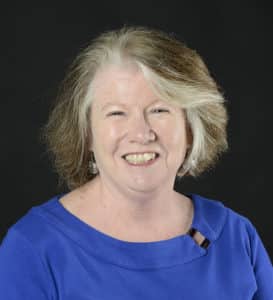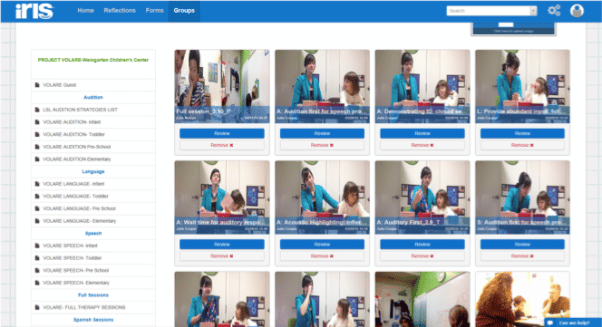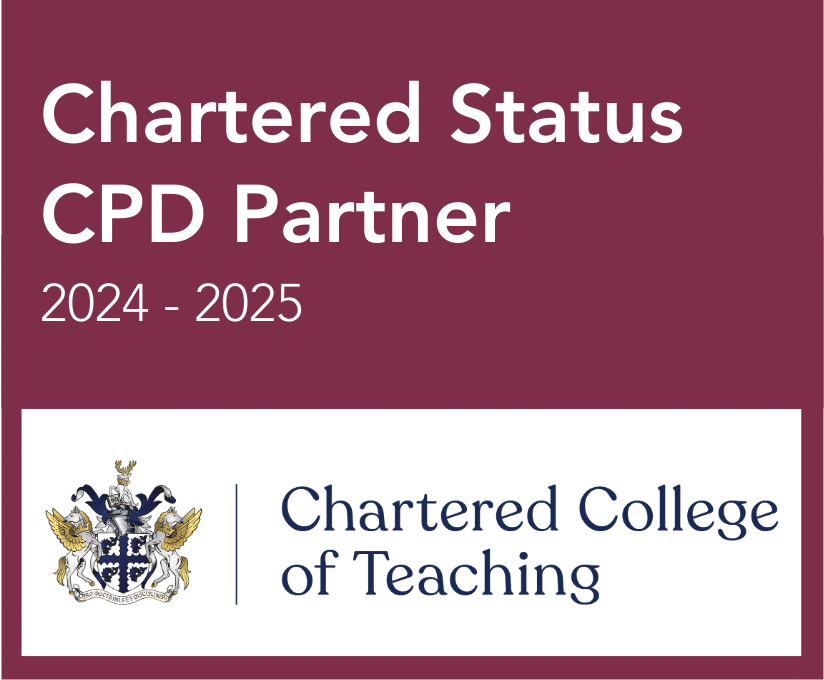Video-enhanced field experiences for Graduate Students in Communication Sciences and Disorders programs
University of Arkansas (US)

Accreditation standards for speech language pathologists are based on identified knowledge and skills competencies. Learning content alone does not guarantee competence in service provision. Best practice models for graduate student education include observation, practice, application and reflection; most students have limited opportunity for exposure to highly competent service providers demonstrating Listening and Spoken Language skills across a range of children who are deaf or hard of hearing. Principles of adult learning call for seeing best practice as a prelude to developing targeted strategies; however, a dearth of resources in Arkansas is currently available on which to model skill development.
The IRIS Connect professional learning platform used for this project offers remote video viewing of classroom instruction and/or therapy sessions. Developed as a professional learning tool for teachers, IRIS Connect has been adopted at the University of Arkansas at Little Rock to record and house a video library of best practice clips of Listening and Spoken Language (LSL) intervention. The IRIS Connect Discovery Kit enables the capture of both high-quality video and audio of these practices, which are automatically uploaded to the IRIS Connect platform. These Discovery Kits were used to create video segments totalling 376 minutes which are stored and accessible by students on the IRIS Connect platform.
Although in-person viewing allows an observer to experience tasks in a more personal context and provides an opportunity for direct interaction with professionals and students, video viewing:
- overcomes the busyness of the classroom, (Knight, 2014);
- provides a shared experience (Hixon & So, 2009);
- allows for multiple viewings and provides multiple perspectives of the same event (Van Es & Sherin, 2006).

Participating graduate students were asked about their experiences viewing these videos during the routine end of course survey.
- 100% of students agreed/strongly agreed that “video observations are an effective way to support student clinicians in developing professional practice”;
- 95% of students agreed/strongly agreed that they “would use therapy activities similar to the ones viewed in the videos.”
As part of their learning assignment, students identified themes from these videos that they wished to incorporate in their own practice. The most frequently reported comments addressed issues related to family-centered intervention, teacher clinician use of encouragement and feedback rather than (empty) praise, and the effectiveness of specific auditory strategies. Exemplary comments include:
- “The knowledge that I gained from these sessions has contributed to my overall clinical skill set.”
- “After watching the videos I will start to incorporate more specific feedback and more caregiver coaching into my clinical practice.”
- “In my own clinical practicum I’ve utilized many of the strategies discussed in class and shown in the videos: acoustic highlighting, wait time, repetition, eliciting, prompting with questions, expanding, and commenting.”
This project has opened the door for video-enhanced “field experiences” for University of Arkansas at Little Rock students regarding the development of listening and spoken language skills in children with hearing loss using listening technologies. This video project supported academic coursework and provided students with 24/7 access, transcending some of the traditional constraints associated with in person observations: travel, scheduling, and child attendance.
In addition to the survey information reported here, 20 second year graduate students participated in a second section of this course. Thus, 39 students logged a total 195 actual viewing hours; this was accomplished with the video library with only 6.5 hours of catalogued video available at the time of the assignment. Continued video capture and cataloging will increase the holdings of the library as additional partners are currently being identified.
Select students from the Master Program at the University of Arkansas Little Rock take additional coursework to obtain a University-issued Certificate in Auditory-Based Intervention (ABI). This program is offered to graduate students who wish to specialize in developing listening and spoken language skills in individuals who are deaf or hard of hearing. The certificate is embedded within the existing degree programs in the department; candidates complete a 15 semester credit specialty track in order to fulfill certificate requirements.
REFERENCES
Hixon, E. & So, H.J. (2009) Technology’s Role in Field Experiences for Preservice Teacher Training. Educational Technology and Society, 12, 294-304
Knight, J. (2014). Focus on teaching: Using video for high-impact instruction. Thousand Oaks, CA: Corwin.
Van Es, E. A., & Sherin, M. G. (2006). How Different Video Club Designs Support Teachers in “Learning to Notice.” Journal of Computing in Teacher Education,22(4), 125-134. Retrieved August 17, 2016, from https://files.eric.ed.gov/fulltext/EJ876909.pdf


